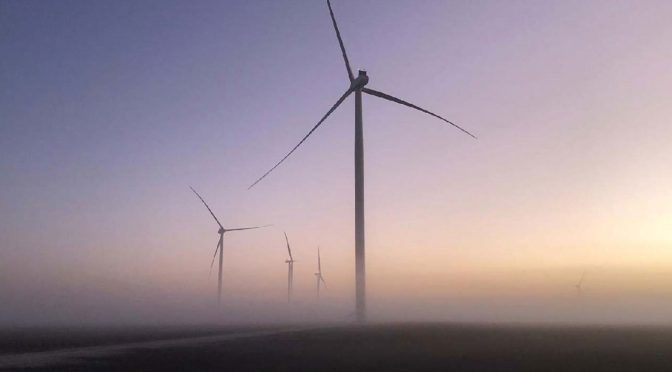RWE, a global leading renewables player, and Latvenergo, one of the largest power suppliers in the Baltic States, have joined forces to develop, construct and operate offshore wind projects off the Latvian coast. Today, a corresponding Memorandum of Understanding (MoU) was signed between the two companies. The equal partnership represents a strong combination of experience and expertise in offshore wind development, efficient project delivery, safe operation and extensive knowledge of the Latvian energy market and power supply in the Baltic States.
The powerful partnership has been forged to support the build-out of offshore wind in order to strengthen Latvia’s energy independence. According to the National Energy and Climate Plan, Latvia aims to increase its wind capacity from currently approximately 70 megawatts (MW) to 800 MW by 2030. In addition, the country plans to open the “ELWIND” tender, a 1-gigawatt (GW) cross-border offshore project in collaboration with Estonia.
Latvian Minister of Economics, Ilze Indriksone, states: “The sea has a special meaning for us, previously we have generally seen it as an environmental resource, a recreational resource and an opportunity to enjoy nature. Today, the meaning has changed, but it is not gone. That is why the involvement of state-owned companies is more than welcome in research, development and in cooperation with international partners. Concluding agreements in research accelerates our goal of reaching energy security and energy independence.”
M?rti?š?akste, Chairman of the Management Board and CEO of Latvenergo, says: “The Baltic Sea wind off Latvia’s shores is a national treasure with untapped potential. Going forward, this will undoubtedly increase the energy independence of Latvia and neighbouring countries, and will enable the export of electricity to the growing European electricity market. Latvenergo has 80 years of expertise in renewable energy, as demonstrated by our generation portfolio of hydropower plants and onshore wind and solar farm projects. By effectively harnessing the power of both the Daugava River and the sun, as well as Latvia’s onshore and offshore wind, the country will have its own independent electricity in all types of weather conditions and at lower prices.”
Sven Utermöhlen, CEO Offshore Wind of RWE Renewables, says: “Offshore wind is key to meeting the increasing demand for renewable power in Europe, supporting local industries and creating new, future-proof jobs. Together with our partner Latvenergo we are committed to contributing towards delivering Latvia’s offshore wind ambitions – hand in hand with the local communities and supply chain. We bring more than 20 years of experience and technical expertise in the offshore industry to this partnership.”
Partners have strong expertise along the entire value chain
RWE is a leading global player in renewables and No. 2 worldwide in offshore wind. RWE operates 18 offshore wind farms in five countries – including Kårehamn (48 MW) off the Swedish coast, the Danish offshore wind farm Rødsand 2 (207 MW, RWE share: 20%) and Arkona, with 385 MW one of the largest offshore wind farms in the German Baltic Sea (RWE share: 50%). In addition RWE is well advanced in the development of its 350-MW F.E.W. Baltic II wind farm off the Polish coast and is progressing with the development of the 1.6-GW Södra Victoria project off the Swedish coast. By 2030, RWE intends to grow its offshore wind capacity from currently 3 GW to 8 GW (this capacity represents RWE’s share only). Globally, RWE is driving an offshore wind development pipeline of 10 GW with secured offshore rights. The focus for further growth is on North America, the Asia Pacific region and attractive markets in Europe in particular – including the Baltic States.
Founded in 1939, Latvenergo is engaged in the generation and trade of electricity and thermal energy, and distribution of electricity. The state-owned company is one of the greenest electricity generators in Europe – approximately half of the electricity is generated in three large-scale hydropower plants. They are complemented by modernised combined heat and power plants, where electricity is obtained from natural gas. Latvenergo develops new green wind and solar energy generation capacities and is also a leader in the field of electromobility services.

